I once got stuck on a construction site with a full load of gravel.
The hydraulic system on my dump trailer failed.
Nothing would lift.
We were behind schedule. My crew stood around. And I stood there, wondering how I’d missed the signs.
That day taught me something:
If you’re going to rely on a dump trailer, you need to know how it works—inside and out.
If you’ve ever asked yourself, “Will this type of trailer actually work for my job?”—you’re in the right place.
I’ve used dump trailers in tight spaces, muddy fields, and high-traffic yards. In this article, I’ll walk you through how they actually work—no fluff, just real talk.
By the end, you’ll know:
- How the dumping system works
- What powers it
- What makes one trailer better for your job than another
You’ll leave with answers—and the confidence to decide if a dump trailer fits your needs.
So let’s get started!
1. What Is a Dump Trailer?
If you’ve ever spent half a day unloading sand or gravel by hand, you know how tiring that gets.
That’s where a dump trailer comes in.
It’s a trailer built to move heavy, loose material—and unload it fast. No need for shovels. No need for a whole crew standing around.
The secret is hydraulic lift. Once you’re in position, you flip a switch or pull a lever. The trailer bed rises. The load slides out.
And just like that, you’re ready to move on to the next job.
What Can It Carry?
Dump trailers are used in all kinds of work.
Here are some of the most common loads:
- Sand
- Gravel
- Crushed stone or ore
- Bricks and concrete chunks
- Scrap material or debris
- Soil, compost, or manure
If you deal with messy, heavy, or bulky loads—this trailer helps.
I’ve seen these used on construction sites, farms, scrap yards, even behind small trucks for landscaping.
They save time. They save your back. And they keep jobs moving.
Why It Matters
The first time I used one, I was surprised at how fast we finished.
What used to take over an hour was done in less than ten minutes.
And it’s not just about speed. Dump trailers also help:
- Cut down on labor
- Make tough jobs easier
- Boost how many loads you can finish in a day
That’s a big deal when your work depends on tight schedules.
Whether you’re in construction, farming, logistics—or just hauling material for your own land—knowing how these trailers work helps you decide if they’re worth it.
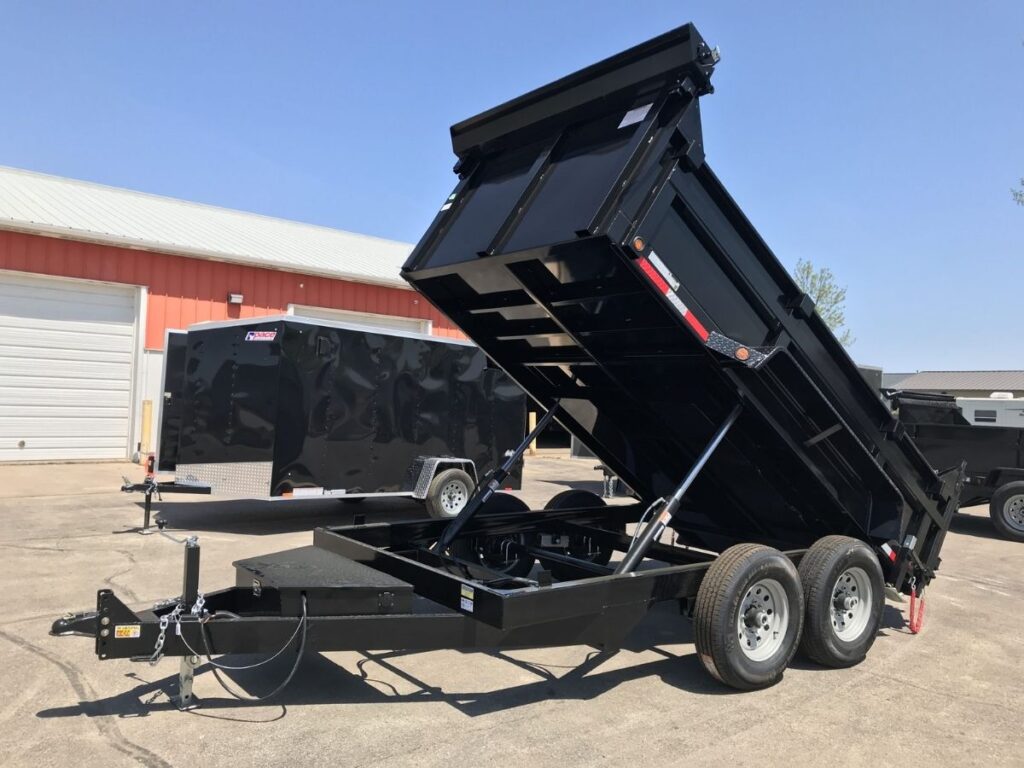
2. How Does a Dump Trailer Work?
A dump trailer looks simple from the outside. But once you start using one, you realize—there’s a lot happening underneath.
Let’s take a closer look.
The Lifting Mechanism
At the heart of every dump trailer is a hydraulic cylinder. This is the part that pushes the trailer bed up from underneath.
Here’s how it works:
- The cylinder is installed near the front of the trailer frame
- When it’s activated, it extends and lifts the front end of the trailer bed
- As the bed tilts up, the load slides out the back by gravity
There are a few ways this system can be powered:
- Manual pumps: Good for light loads. You pump it by hand. Slower, but simple.
- Electric hydraulic systems: Powered by a battery. Great for mid-sized jobs. Easy to use.
- Engine-driven hydraulic systems: Usually on larger trailers. These connect to a truck’s PTO (power take-off). Built for heavy-duty work.
Each type has its place. If you’re hauling a few yards of dirt, electric is usually enough. For rock, scrap, or anything dense—you’ll want engine-driven power.
Loading and Unloading Process
Here’s how the job usually flows:
- Load materials into the trailer evenly
- Drive to the dump location
- Park on level, firm ground
- Lock your wheels or engage the brakes
- Activate the hydraulic lift
- Let the bed rise and the load slide out
- Lower the bed before moving again
Tip: Always check your load balance before lifting.
A tilted or uneven load can shift suddenly. That’s how trailers tip or get damaged. I’ve seen someone dump on soft ground—tires sank, the trailer leaned, and the whole thing almost rolled. Use a stable surface. Don’t rush.
Knowing how your trailer lifts and unloads helps you stay safe—and get more done.
3. Different Types of Dump Trailers
Not all dump trailers work the same way. Some lift from the front. Others tilt to the side. A few drops from underneath.
Choosing the right one depends on what you’re hauling and where you’re working.
Over the years, I’ve seen people make costly mistakes by picking the wrong type.
A mining crew once tried using a rear dump trailer on uneven ground. The whole load shifted, and the trailer nearly tipped. That’s why it’s important to know the options.
Here are the three main types of dump trailers and how each one works.
End Dump Trailer
This is the most common type. The trailer bed lifts from the front and dumps the load out the back. You’ll see these on construction sites and in mining yards.
They work well for:
- Rocks
- Scrap
- Demolition debris
- Coarse materials
But they need solid, flat ground. Because they lift high, there’s a risk of tipping if the load shifts or the surface is soft.
Best for:
- Construction companies
- Mining operations
- Heavy material haulers
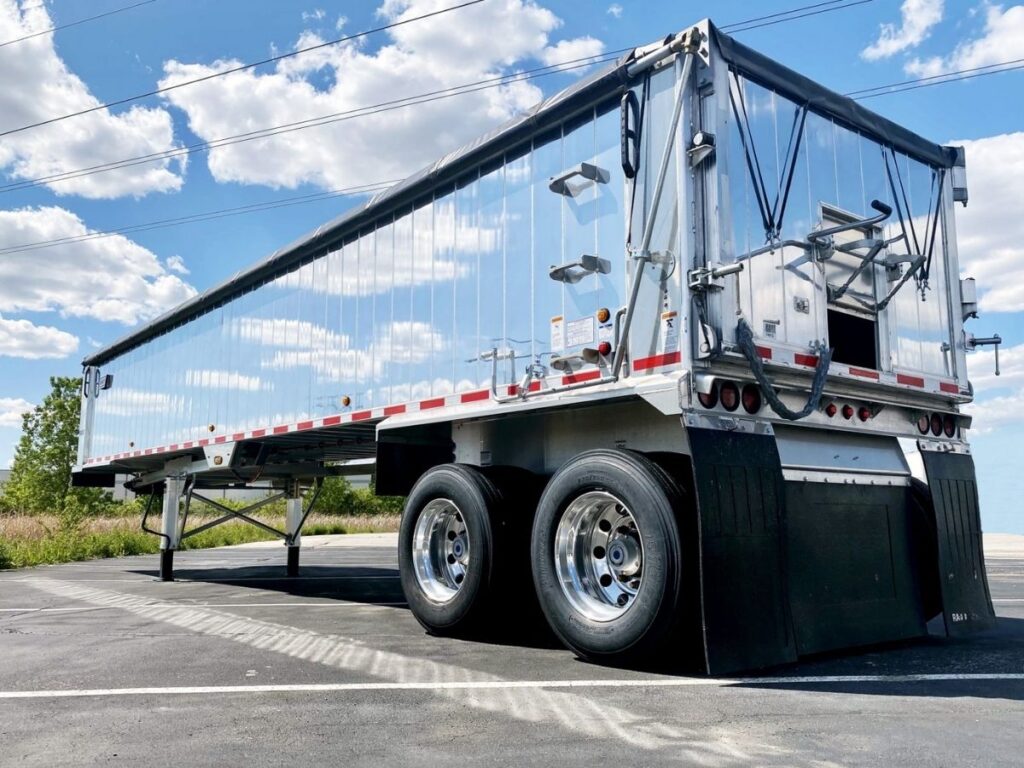
Side Dump Trailer
Instead of lifting from the front, this trailer tilts to one side. The load spills out fast, and the trailer stays lower to the ground. These are useful on rough or uneven terrain. There’s less risk of tipping, and unloading is quick.
Side dumps work well for:
- Wet soil
- Agricultural products
- Loose rock
I’ve seen farmers and quarry workers use them where space is tight or ground is sloped.
Best for:
- Agriculture
- Mining sites
- Remote job sites
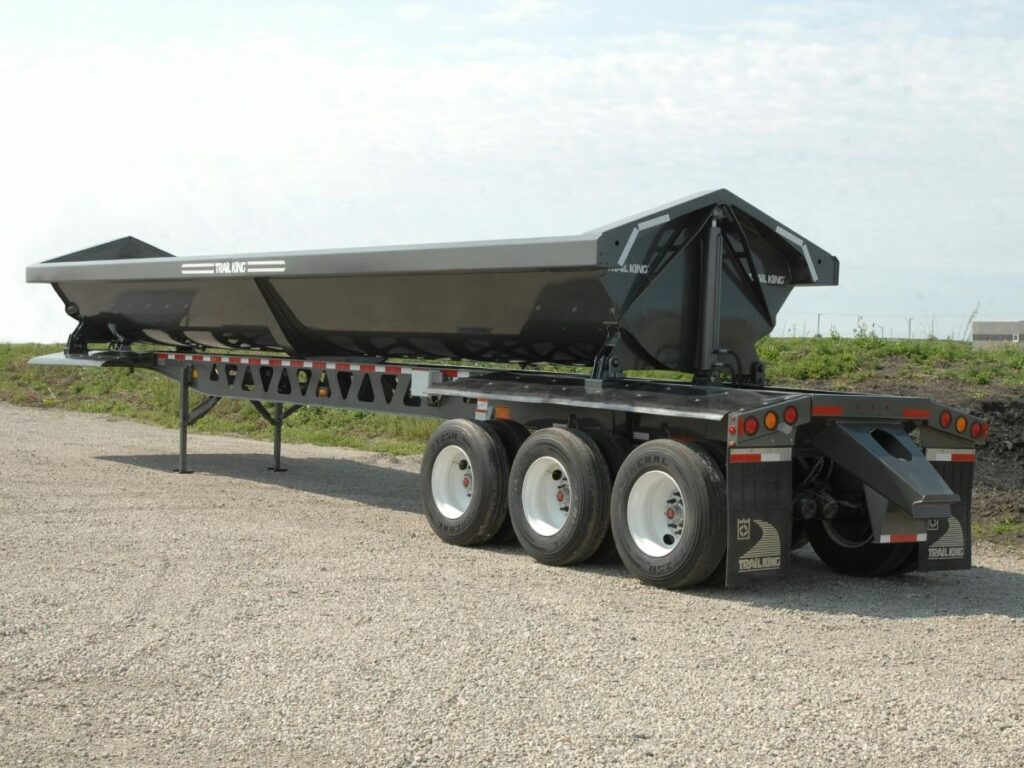
Bottom Dump (Belly Dump) Trailer
This one drops the load straight down through doors on the bottom. It’s great for spreading material while moving—like laying gravel over a long stretch. You won’t need to stop to unload. That can save time on road projects or large fields.
Used often for:
- Sand
- Gravel
- Soil conditioning
Best for:
- Road building
- Landscaping
- Farming
At Rhinotrail, we’ve built all three types for clients across construction, farming, and logistics.
Each one serves a different job—and knowing the difference helps you avoid buying the wrong trailer.
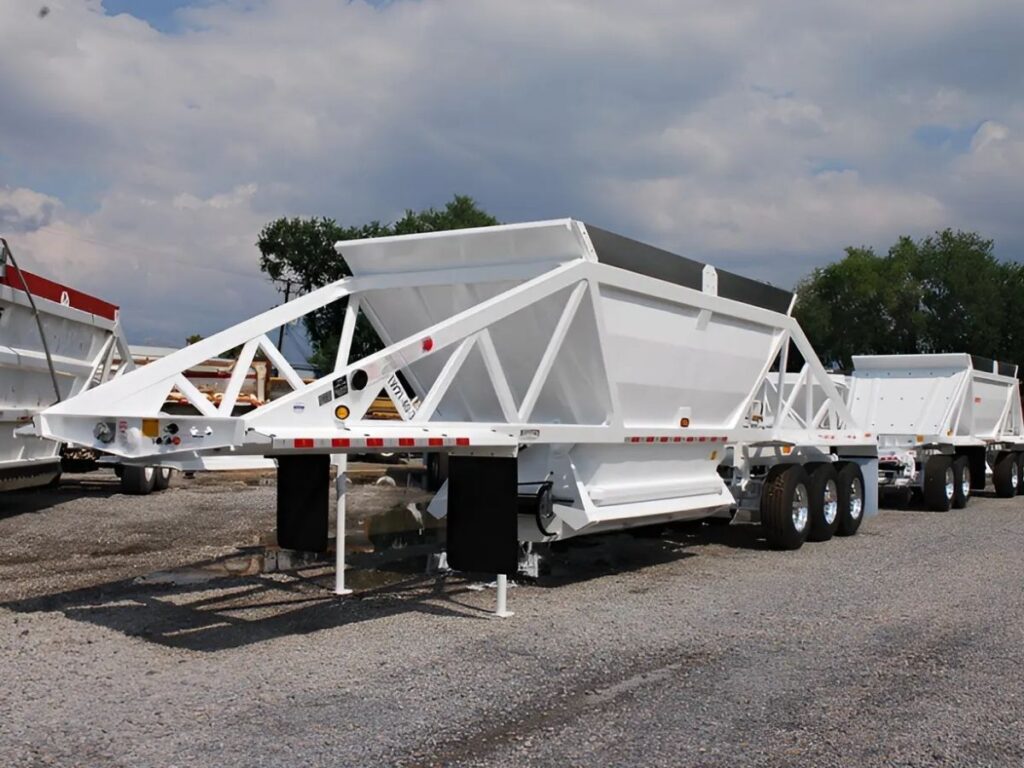
4. Who Should Use a Dump Trailer?
Dump trailers aren’t just for big companies. They’re used every day by people in construction, mining, farming even small business owners with one truck.
If your work involves moving bulk material, there’s a good chance a dump trailer can save you time and labor.
Let’s look at who uses them—and why.
Construction Companies
Construction sites deal with constant hauling—bricks going in, debris coming out, gravel being dumped in tight corners. A dump trailer can take care of all that with fewer hands on the ground.
I once worked with a team that used a 10-ton dump trailer for their daily runs. They were clearing broken tile, brick, and scrap from multiple sites. Before switching trailers, they needed two extra laborers just to handle unloading. After switching, those workers were reassigned, and the job moved faster.
Good uses in construction:
- Delivering materials to job sites
- Hauling away demo debris
- Moving dirt or gravel between areas
If your projects are on a tight schedule, this trailer takes pressure off your team.
Mining Companies
Mining is tough on equipment. Loads are heavy, sites are rough, and downtime is expensive. That’s why many mining companies use side dump trailers. They tilt quickly, even on uneven ground, which makes them perfect for removing tailings or loose rock.
These trailers need to be built strong. I’ve seen Rhinotrail supply mining trailers with thicker beds and extra support underneath—because lighter builds just don’t last in that kind of work.
Perfect for:
- Crushed stone or ore
- Dirt removal
- Tailings disposal
If your site deals with unstable terrain or sharp loads, a reinforced dump trailer is worth looking into.
Agricultural & Food Businesses
Farms use dump trailers in more ways than you’d think. You might haul manure in the morning, then load feed or grain in the afternoon. Moist, loose, or sticky material slides out easily with a tilted bed, which saves you from getting in and shoveling it yourself.
Farmers I’ve worked with say it helps most during harvest season, when timing is tight and field work is constant.
You can haul:
- Manure or compost
- Animal feed
- Fertilizer
- Crops or silage
For daily work that changes with the season, dump trailers offer flexibility and speed.
Independent Drivers / Owner-Operators
If you run your own truck or manage a small fleet, a dump trailer is a solid way to take on more jobs. Landscaping, junk removal, renovation work—these aren’t giant contracts, but they add up. Having a trailer that can unload quickly means more trips and more income.
I’ve talked to drivers who started with general cargo, then added a dump trailer and picked up local gravel runs, yard cleanup jobs, and even farm delivery contracts.
Common uses:
- Mulch and soil delivery
- Junk hauling
- Demo cleanup
- Small construction jobs
It’s one tool that opens the door to many kinds of work.
5. Dump Trailer vs Other Trailer Types
Not all trailers work the same way. And not all trailers are right for the job you’re doing.
I’ve had times where a flatbed was fine—until we hit soft ground and the crew spent hours unloading by hand. Other times, a dump trailer felt like overkill for small loads. That’s why it helps to understand what each type does best.
Here’s a simple comparison to help you figure out if a dump trailer is the right choice for your work—or if another type makes more sense.
This content is only supported in a Feishu Docs
At Rhinotrail, we manufacture a full range of trailers from dump trailers to flatbeds to cargo trucks because we’ve seen firsthand how different jobs call for different tools. Whether you’re moving bricks, soil, or machinery, picking the right trailer saves time, labor, and cost.
6. Maintenance and Longevity Tips
If you want your dump trailer to last, you’ve got to take care of it. I’ve seen trailers wear out in just a few years—and I’ve seen others still going strong after a decade.
The difference? Simple maintenance.
You don’t need to be a mechanic. But you do need to check a few things regularly. And a little care now can save you from costly repairs later.
Let’s start with the basics.
Regular Maintenance Checklist
Here are the tasks I recommend doing often. Some weekly. Some monthly. None of them take too long.
- Check hydraulic fluid levels weekly Low fluid means weak lifts or no lift at all. I always top mine off before a busy week.
- Inspect hoses and fittings for leaks or cracks Look for any signs of wear. One bad hose can shut you down mid-job.
- Clean off mud, salt, and material build-up After a few muddy hauls, I hosed the trailer down. Salt and dirt can be eaten through paint and metal.
- Grease pivot points and hinges I keep a small grease gun in the truck. A few pumps can stop wear and keep things moving smooth.
- Tire pressure and brake system check I check tire pressure before any long run. Low tires wear out fast. While you’re there, take a look at the brake lines too.
If you build these into your routine, you’ll catch small problems before they become big ones.
Long-Term Durability Tips
A trailer isn’t cheap. And you want it to last. Here’s what I’ve learned over the years:
- Store indoors or cover when not in use Rain, sun, and snow all wear down your trailer over time. Even a tarp helps.
- Avoid rust-prone materials in rough climates If you’re working in wet, humid areas—or mining regions—go for trailers with stronger paint or galvanized coatings. I’ve seen some trailers rust from underneath after just two rainy seasons.
- Keep your loads within the rated limit It’s tempting to add “just one more scoop.” But overloaded trailers wear out fast. The axles, tires, and hydraulics all take a hit.
A dump trailer is an investment. Treat it like part of your crew—check on it, clean it, and give it what it needs. The better you take care of it, the longer it’ll take care of you.
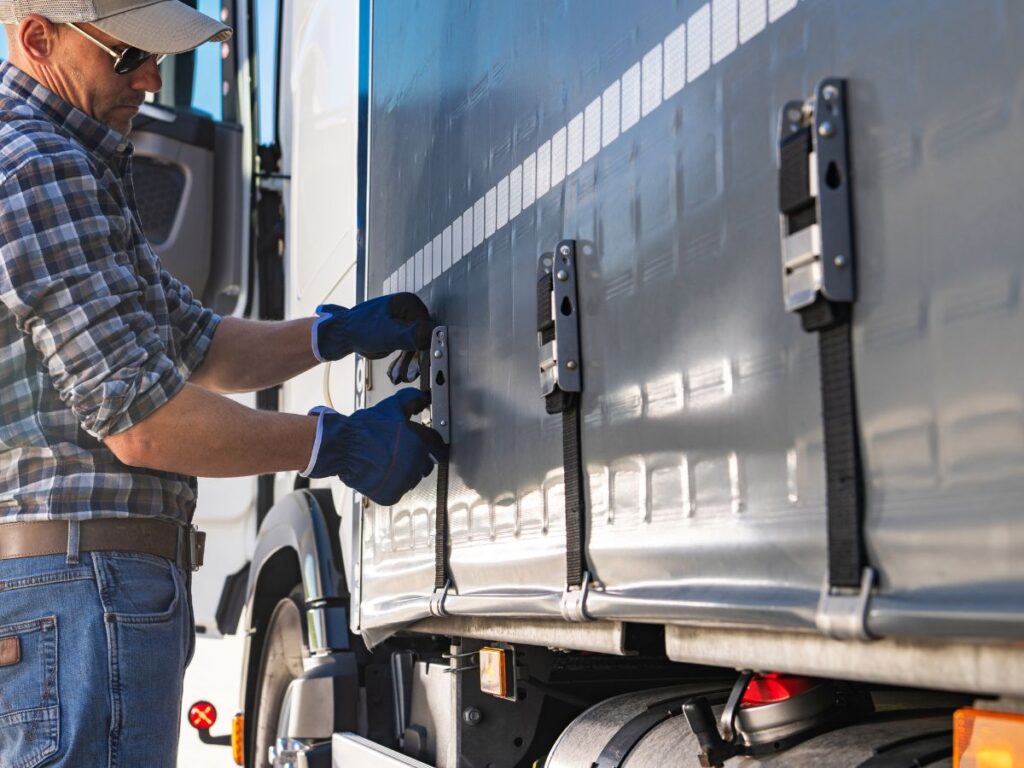
7. Tips When Choosing the Right Dump Trailer for Your Business
Buying the wrong dump trailer can slow you down—or worse, cost you money. I’ve made that mistake before. Years ago, I picked a trailer based on price alone. It looked tough, but the hydraulics couldn’t handle heavy gravel. After a few weeks, the cylinder failed.
That experience taught me one thing: The right dump trailer depends on the job.
Here’s how to make the right choice for your business.
Match the Trailer to the Material
Start by thinking about what you’re hauling. Not all materials are the same—and neither are dump trailers.
- Heavy, dense loads (like rock, ore, concrete): You’ll need stronger steel and high-power hydraulics. Don’t cut corners here.
- Lightweight or loose materials (like mulch, sawdust, grain): You’ll want a trailer with more volume. Think taller sides and a bigger bed.
I once worked with a farming client who used a low-capacity trailer for hauling compost. It filled up fast and needed multiple trips. Switching to a larger-volume model cut his runs in half.
Consider Load Volume and Weight Capacity
Every trailer has a Gross Vehicle Weight Rating (GVWR). That’s the total weight it can safely carry—including the trailer itself. Know your loads. Then choose a GVWR that gives you room to work—not just the bare minimum.
Also consider axle setups:
- Tandem axles (two): Handle moderate loads well. More stable than single axles.
- Triple axles (three): Better for heavy or frequent hauling. They spread weight and reduce stress on the frame.
If your hauls are getting heavier over time, triple axles are worth it.
Site Conditions and Terrain
Your trailer doesn’t just need to carry loads it needs to survive the ground you drive on.
- Steep hills: You’ll want better brakes and more control when unloading.
- Remote or rough areas: Off-road tires and stronger suspension can make a big difference.
One crew I knew switched to off-road tires after getting stuck in a muddy field. That one upgrade saved them hours on tough sites.
Manual vs. Electric Hydraulics
Both systems lift your trailer bed but they work differently.
- Electric hydraulics: Easier, faster, and better if you’re unloading often. Just press a button.
- Manual hydraulics: Cheaper and simpler. But you’ll need to pump by hand. Fine for light loads or short jobs.
If you’re using the trailer daily, electric is worth it. If it’s a weekend tool or backup unit, manual can work just fine.
Choosing the right dump trailer isn’t about picking the biggest or the newest. It’s about knowing your work—and matching the trailer to it.
Conclusion
That day I stood on-site, stuck with a full load and no lift I knew I had missed something important.
Now you don’t have to.
We’ve covered what dump trailers are, how they work, and how to choose the right one. You know what to check, what to avoid, and how to keep it running for years.
So what’s next?
Take what you’ve learned and apply it. Start small. Ask questions. Make the next move count.
What kind of work are you hauling today? Is your trailer helping or slowing you down?
Contact us today if you’re ready to find your best-fit dump trailer.


